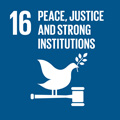- Docente: Francesca Biagini
- Credits: 5
- SSD: L-LIN/21
- Language: Russian
- Teaching Mode: In-person learning (entirely or partially)
- Campus: Forli
- Corso: First cycle degree programme (L) in Intercultural and Linguistic Mediation (cod. 8059)
-
from Oct 01, 2024 to Dec 05, 2024
Learning outcomes
The student will be able to apply basic translation instruments (grammar, dictionaries and corpora) as well as methods (source text analysis and its transposition into the translated text) in the translation of a variety of specific texts from Russian into Italian. The student will also be able to identify and apply the most appropriate basic translation strategies to fulfil the communicative/operational functions of the source text.
Course contents
The course is aimed at developing awareness of some problems linked to translating and translatability. Students will tackle a variety of texts concerning historical, economical, socio-cultural and journalistic fields. Translating practice will be supported by theoretical reflections. The translations will be regularly compared and discussed in the classroom. The course will include some of the conferences organized by the Laboratory of Literary Translation at DIT.
Readings/Bibliography
Testi di approfondimento
Bonciani D., Romagnoli R., Smykunova N. MIR TESEN, Hoepli, 2016
Čukovskij, K., Vysokoe iskusstvo, Moskva: Sovetskij pisatel’, 1968 (http://www.chukfamily.ru/kornei/prosa/knigi/vysokoe).
Čukovskij, K., La traduzione: una grande arte, Venezia: Libreria Editrice Cafoscarina, 2003.
De Vidovich, S., Letteratura russa, Milano: Vallardi A., 2011.
Dobrovolskaja, Ju., Il russo: l’ABC della traduzione, Milano: Hoepli, 2016.
Garbovskij, N. K., Teorija perevoda, Moskva: Izdatel’stva Moskovskogo Universiteta, 2004.
Garzaniti, M., Gli slavi, Roma: Carocci, 2013.
Nergaard S. (a cura di), La teoria della traduzione nella storia, Milano: Bompiani, 2002.
Nergaard S. (a cura di), Teorie contemporanee della traduzione, Milano: Bompiani, 1995.
Salmon, L., Teoria della traduzione. Milano: FrancoAngeli, 2017.
Dizionari e corpora:
Majzel', B., Skvorcova, N., Bolšoj russko-ital'janskij slovar', Moskva: Russkij jazyk, 2001.
Zor’ko, G., Majzel', B., Skvorcova, N., Novyj ital’jansko-russkij slovar’, Moskva: Russkij jazyk, 1995.
Dobrovolskaja, Ju., Grande dizionario russo-italiano, italiano-russo, Milano: Hoepli, 2011.
Kovalev, V., Dizionario russo-italiano, italiano-russo, Zanichelli, 2020.
Ožegov, S., Švedova, N., Tolkovyj slovar' russkogo jazyka, Moskva: Az’’ Ltd., 1992.
Kuznecov, S., Bol’šoj tolkovyj slovar’ russkogo jazyka, Sankt-Peterburg: Norint, 2004.
Prochorov, A. gl. red., Bol’šoj ènciklopedičeskijj slovar’, Sankt-Peterburg: Norint, 1999.
Slovar’ Lingvo Live https://www.lingvolive.com/ru-ru
www.ruscorpora.ru
Teaching methods
Student attendance is compulsory (at least 70%). The course includes both seminars and theoretical reflection.
During classes students will be asked to read, analyse and contextualize texts before starting the translation process.
Translation techniques will be discussed from the point of view of strategies to be applied to produce good quality 'translation' aimed at a specific target readership.
Exercises will also be carried out to highlight the main morphosynthetic asymmetries between the source and target languages. Comparison between the texts translated by students and the outcome of machine translation will be also carried out.
Translations will be prepared before each lesson. Classes will be held in a seminar setting, and all students will be expected to participate in and contribute to the discussions.
As concerns the teaching methods of this course unit, all students must attend the online Modules 1, 2 on Health and Safety [https://www.unibo.it/en/services-and-opportunities/health-and-assistance/health-and-safety/online-course-on-health-and-safety-in-study-and-internship-areas].
Assessment methods
A written exam consisting in a Russian text to be translated into Italian with the use of paper dictionaries and online resources.
Total Length: about 300 words. Time: 3 hours.
The translation will be accompanied by a brief commentary of about 250-300 words, in which the prevailing communicative function of the source text, the difficulties encountered and the translation techniques adopted will be explained.
The mark of the examination is expressed out of thirty - the pass mark is 18/30 and the highest mark is 30/30, according to the following grading scale:
30-30L
Excellent level. The candidate possesses excellent translation/language skills, with a very high level of competence in the target language /(or) in the language and culture being studied.
27-29
The candidate makes only minor errors, and shows a solid command of the required skills and competences.
24– 26
Generally sound level. The candidate displays a number of shortcomings, indicating a reasonable command of the required skills and competences.
21-23
Adequate level. The candidate displays significant shortcomings and only an adequate command of the required skills and competences.
18– 20
Minim level. The candidate only meets the minimum level required and shows a minimal command of the required skills and competences.
< 18 Fail
The candidate’s does not meet the required standard and shows a wholly inadequate command of the required skills and competences.
Teaching tools
- Computer, video-projector, Internet connection
- Common paper dictionaries
- On line and cd-rom dictionaries
- Monolingual and parallel corpora
- E-learning platform (https://virtuale.unibo.it/)
Office hours
See the website of Francesca Biagini
SDGs


This teaching activity contributes to the achievement of the Sustainable Development Goals of the UN 2030 Agenda.
